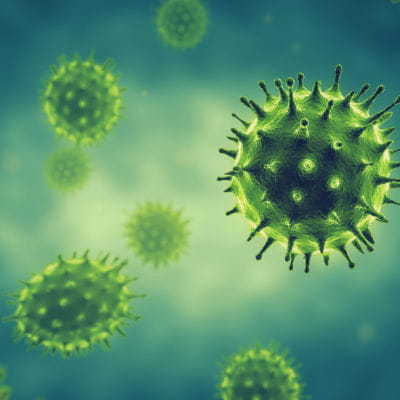
By James Bingham, MS
Senior Research Microbiologist, GOJO
Viruses appear to have been acting strangely over the past year as we have emerged from COVID restrictions.1 During the first two years of the pandemic, many infectious diseases that typically circulate during certain times of year took a hiatus. COVID-19 precautions, like social distancing, wearing masks, increased hand hygiene, and surface disinfection, and limited travel, were highly effective at limiting the spread of COVID-19 but also limited the spread of many common illnesses that spread through similar transmission routes as COVID-19.
Now that these pandemic precautions are falling away, and people are traveling more broadly again – including international travel – these viruses are back, and sometimes they’re appearing off-season or otherwise behaving oddly. For example:
- Every year, about 300 to 400 outbreak cases of norovirus are reported to the Public Health Agency of Canada. However, this year there were already 339 cases confirmed between mid-January and early April 2022. 2
- RSV (respiratory syncytial virus) typically causes illness in the winter months, but last year, RSV was circulating in the summer and into the early fall in the U.S. and other countries around the globe.3.4
- In Canada there has been a delay or absence in several traditional seasonal influenza milestones, including the declared start of the influenza season.5
- Monkeypox was previously found only in Central and West Africa but has caused an ongoing global monkeypox outbreak. According to Health Canada, there are a total of 1,411 confirmed cases in Canada. 6
- Unexplained hepatitis cases in children have been hypothesized to be caused by Adenovirus despite no evidence it’s ever caused that type of illness before.7 (Adenoviruses are common viruses that typically cause mild cold or flu-like illness.)
- We have seen in 2022 a resurgence of Polio in England, Israel, and United States 8
Why recap this? Many are tired of hearing about COVID-19, but the reality is that many other viruses circulate – sometimes seasonally – and have the potential to make us sick. As the winter season approaches in the northern hemisphere, people should keep up good hygiene behaviors – whether or not COVID-19 is circulating broadly in your community – and businesses should ensure they are also prepared.
Why do germs spread more in winter?
As the temperatures drop during the transition to winter, humidity also drops. Germs thrive in this dry, cool environment. Additionally, people spend more time indoors with the windows closed and less air circulation. When we gather indoors, there is more potential for germs to survive and transmit through the air or surfaces.
Is waning immunity a concern?
We haven’t been exposed to as many germs after two winters with fewer viruses, such as the flu, circulating. So, our immune systems may have fewer antibodies remaining from previous illnesses and exposures. Therefore, if you catch a cold after two winters without one, your symptoms may appear worse. This is called waning immunity. It’s a more significant concern for those at high risk for complications like the immunocompromised, young children, pregnant women, or the older adult population.
What impact does waning immunity or lack of immunity have on children?
Waning immunity may be more pronounced in babies born during the pandemic who may have had fewer antibodies passed on by their mother, or children whose normal school or daycare routines have been interrupted for an extended period of time or who have had reduced exposure to people outside their household. Public health experts are additionally concerned that the interruption of childhood vaccinations the pandemic caused for many could potentially cause outbreaks of vaccine-preventable illnesses. (A report by the WHO and UNICEF shows “the largest sustained drop in childhood immunizations in a generation.”)
What does this mean for the winter germ season?
The pandemic and widespread lockdowns caused a major global shift in virus transmission, not just SARS-CoV-2. So, it’s to be expected that there may be a period of adjustment when our social interactions return – adjustment for ourselves and, in some cases, possibly viruses themselves. It does not necessarily mean that there could be a lot of illnesses this winter, but we should be prepared for that possibility. As we emerge from the COVID pandemic, we are in uncharted territory in regard to infectious disease transmission, and predicting what is likely to happen is even more challenging.
GOJO scientists and clinicians will be doing a series of articles over the remainder of this year to help you prepare personally and ensure your business is prepared for germs that will be circulating this winter. Make sure to check our Newsroom section on the GOJO Canada website, to stay up to date with new articles on what to expect this flu season and how to prepare your home and business. In the meantime, visit the PURELL Well-Being Centre for helpful information like when to wash or sanitize your hands, where germs are hiding, and where to place surface and hand hygiene products in your business to show your customers and employees you care.
Read these other GOJO articles on surface hygiene from our scientists: